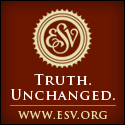The Universal Church also known as the Church Militant. This is the "one holy catholic church" referred to in the Apostles' Creed and Nicene Creed. Some people feel this church has not existed since the Great Schism of 1054.
The Apostles' Creed is an early statement of Christian belief, possibly from the first or second century, but in its current form more likely post-Nicene Creed in the early 4th Century AD. The theological specifics of the creed appear to be a refutation of the early heresy of Gnosticism. The Apostles' Creed is widely used by a number of Christian denominations for both liturgical and catechetical purposes, most visibly by liturgical churches of western tradition, including Lutheran churches, Anglican and Episcopalian churches and Roman Catholic churches.
I believe in God, the Father Almighty,
the Creator of heaven and earth,
and in Jesus Christ, His only Son, our Lord:
Who was conceived of the Holy Spirit,
Who was conceived of the Holy Spirit,
born of the Virgin Mary,
suffered under Pontius Pilate,
was crucified, died, and was buried.
He descended into hell.
The third day He arose again from the dead.
He ascended into heaven
He ascended into heaven
and sits at the right hand of God the Father Almighty,
whence He shall come to judge the living and the dead.
I believe in the Holy Spirit, the holy catholic church,
I believe in the Holy Spirit, the holy catholic church,
the communion of saints, the forgiveness of sins,
the resurrection of the body, and life everlasting.
Amen.
Amen.
The Nicene Creed is a Christian statement of faith accepted by the Roman Catholic, Eastern Orthodox, Anglican, and most Protestant churches. It gets its name from the First Council of Nicaea (325 A.D.), where it was initially adopted, and from the First Council of Constantinople (381 A.D.), where a revised version was accepted. Thus it may be referred to specifically as the Niceno-Constantinopolitan Creed to distinguish it from the original 325 A.D. version.
The original Nicene Creed adopted in 325 ended just after the words, "We believe in the Holy Spirit..." Content was added at the First Ecumenical Council of Constantinople in 381 A.D.; hence the name "Niceno-Constantinopolitan Creed", which refers to the modified or updated creed. The Third Ecumenical Council in Ephesus (431 A.D.) reaffirmed the creed in this form and explicitly forbade making additional revisions to it.
There have been other subsequent creeds formulated to guard against perceived heresy, but this one, as revised in 381 A.D., was the last time both Catholic and Orthodox communions were in united agreement on a Credo. This creed is not to be confused with the later Athanasian Creed.
The original Nicene Creed adopted in 325 ended just after the words, "We believe in the Holy Spirit..." Content was added at the First Ecumenical Council of Constantinople in 381 A.D.; hence the name "Niceno-Constantinopolitan Creed", which refers to the modified or updated creed. The Third Ecumenical Council in Ephesus (431 A.D.) reaffirmed the creed in this form and explicitly forbade making additional revisions to it.
There have been other subsequent creeds formulated to guard against perceived heresy, but this one, as revised in 381 A.D., was the last time both Catholic and Orthodox communions were in united agreement on a Credo. This creed is not to be confused with the later Athanasian Creed.
We believe in one God, the Father,
the Almighty, maker of heaven and
earth, of all that is seen and unseen.
We believe in one Lord, Jesus Christ,
the only Son of God, eternally
begotten of the Father, God from
God, light from light, true God from
true God, begotten, not made, one in
Being with the Father.
For us and for our salvation he came
down from heaven, by the power of
the Holy Spirit he was born of the
Virgin Mary and became truly human.
For our sake he was crucified under
Pontius Pilate; he suffered, died and
was buried.
On the third day he rose again in
fulfillment of the Scriptures; he
ascended into heaven and is seated at
the right hand of the Father. He will
come again in glory to judge the
living and the dead, and his kingdom
will have no end.
We believe in the Holy Spirit, the
Lord, the giver of life, who proceeds
from the Father and the Son.
Who with the Father and the Son is
worshiped and glorified.
Who has spoken through the prophets.
We believe in one holy catholic and
apostolic Church. We acknowledge one
baptism for the forgiveness of
sins. We look for the resurrection of
the dead, and the life of the world to
come. Amen.
The the Great Schism, also known as the East-West Schism, was the event that divided "Chalcedonian" Christianity into Western (Roman) Catholicism and Eastern Orthodoxy. Though normally dated to 1054, when Pope Leo IX and Patriarch Michael I excommunicated each other, the East-West Schism was actually the result of an extended period of estrangement between the two bodies of churches. The primary causes of the Schism were disputes over papal authority -- the Roman Pope claimed he held authority over the four Eastern patriarchs, while the four eastern patriarchs claimed that the primacy of the Patriarch of Rome was only honorary, and thus he had authority only over Western Christians -- and over the insertion of the filioque clause into the Nicene Creed. There were other, less significant catalysts for the Schism, including variance over liturgical practices and conflicting claims of jurisdiction.
The Church split along doctrinal, theological, linguistic, political, and geographic lines, and the fundamental breach has never been healed. It might be alleged that the two churches actually reunited in 1274 (by the Second Council of Lyons) and in 1439 (by the Council of Basel), but in each case the councils were repudiated by the Orthodox as a whole, given that the hierarchs had overstepped their authority in consenting to these so-called "unions". Further attempts to reconcile the two bodies have failed; however, several ecclesiastical communities that originally sided with the East changed their loyalties, and are now called Eastern Rite Catholic Churches. For the most part, however, the Western and the Eastern Churches are separate. Each takes the view that it is the "One Holy Catholic and Apostolic Church", implying that the other group left the true church during the Schism.
The Church split along doctrinal, theological, linguistic, political, and geographic lines, and the fundamental breach has never been healed. It might be alleged that the two churches actually reunited in 1274 (by the Second Council of Lyons) and in 1439 (by the Council of Basel), but in each case the councils were repudiated by the Orthodox as a whole, given that the hierarchs had overstepped their authority in consenting to these so-called "unions". Further attempts to reconcile the two bodies have failed; however, several ecclesiastical communities that originally sided with the East changed their loyalties, and are now called Eastern Rite Catholic Churches. For the most part, however, the Western and the Eastern Churches are separate. Each takes the view that it is the "One Holy Catholic and Apostolic Church", implying that the other group left the true church during the Schism.









No comments:
Post a Comment